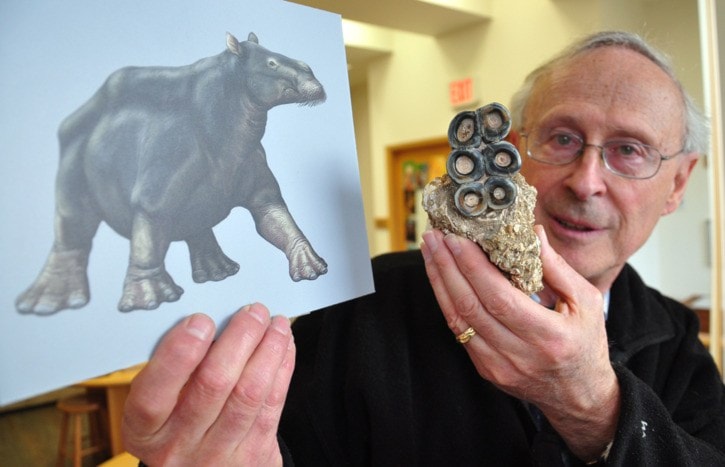As a long-extinct blubbery hippo-like aquatic beast, one day youBดฮิชนูอ๘อ๘ึทre munching on marsh grass on the California coast, and then 15 million years later, your tooth is for sale at flea market in Victoria.
Such is the cycle of life. Last year a member of the Victoria Palaeontology Society happened across the big black molar with itBดฮิชนูอ๘อ๘ึทs six distinct cusps at a garage sale, and rescued it for the Royal B.C. Museum.
The tooth will be one of the highlights at this weekendBดฮิชนูอ๘อ๘ึทs Fossil Fair, an event that will fill the Swan Lake nature house with hundreds of bones and fossils reaching back 550 million years ago to relatively recently Bดฮิชนูอ๘อ๘ึท 10,000 years ago the end of the last Ice Age.
The rescued molar belonged to a plant eating marine mammal distantly linked to manatees and sea cows, and was originally found in California.
Bดฮิชนูอ๘อ๘ึทThe tooth is dramatic and represents the group as a whole,Bดฮิชนูอ๘อ๘ึท said Tom Cockburn, a research associate with the RBCM and a member of the Victoria Palaeontology Society.
A molar tooth of a similar creature was found in the Sooke area in the 1920s by Ira Cornwall. That species was named Cornwallis sookensis and is dated to about 25 million years old. A cast of that tooth will also be on display courtesy of the RBCM.
Bดฮิชนูอ๘อ๘ึทThese are big aquatic mammals which went on land too, for feeding and foraging,Bดฮิชนูอ๘อ๘ึท Cockburn said. Bดฮิชนูอ๘อ๘ึทThey look like hippos and they may be distantly related to hippos.Bดฮิชนูอ๘อ๘ึท
These sea mammals would have lived on the shores of Vancouver Island and B.C. as long as 25 million years ago, which didnBดฮิชนูอ๘อ๘ึทt look a great deal different from now, although it may have been warmer.
People camping found bones of another similar species in a riverbed leading to Sombrio Beach in 2007, and turned them over to the museum.
Out of that discovery, Cockburn and Brian Beatty of the New York College of Osteopathic Medicine, have authored a paper on the creature, called Behemotops, which is undergoing a peer review in a scientific journal.
Bดฮิชนูอ๘อ๘ึทBehemotops would have spent a lot of time in the water, but its feet show it would definitely walk on land,Bดฮิชนูอ๘อ๘ึท Cockburn said. Bดฮิชนูอ๘อ๘ึทWe think it would come out (of the ocean) to feed on marsh grass and in estuaries.
"It would look about the size of a sea lion size,Bดฮิชนูอ๘อ๘ึท he said. Bดฮิชนูอ๘อ๘ึทItBดฮิชนูอ๘อ๘ึทs not a little guy, but itBดฮิชนูอ๘อ๘ึทs not hippo sized either.Bดฮิชนูอ๘อ๘ึท
Among the dinosaur bones and creatures on display, this year the society is showing the tire-sized fossil of a giant extinct cephalopod alongside a life sized artist rendering of the creature, tentacles and all.
The fossil fair runs March 23 and 24, 10 a.m. to 4 p.m., at Swan Lake Christmas Hill Nature Sanctuary 3873 Swan Lake Rd.
See vicpalaeo.org for more on the Victoria Palaeontology Society.
editor@saanichnews.com




.jpg)